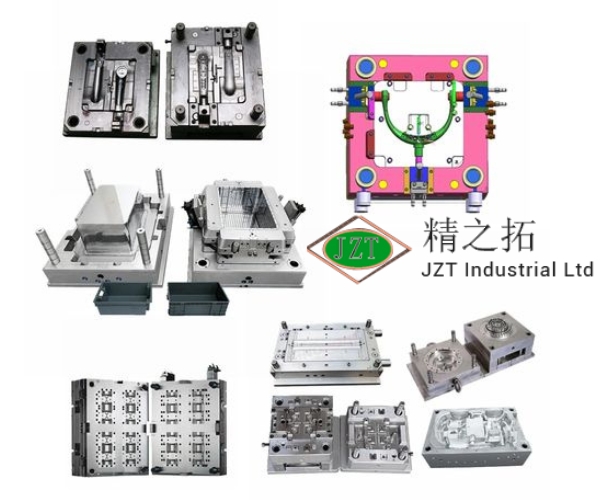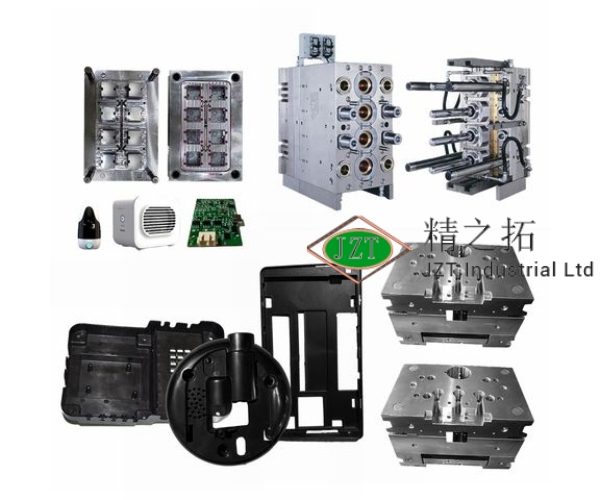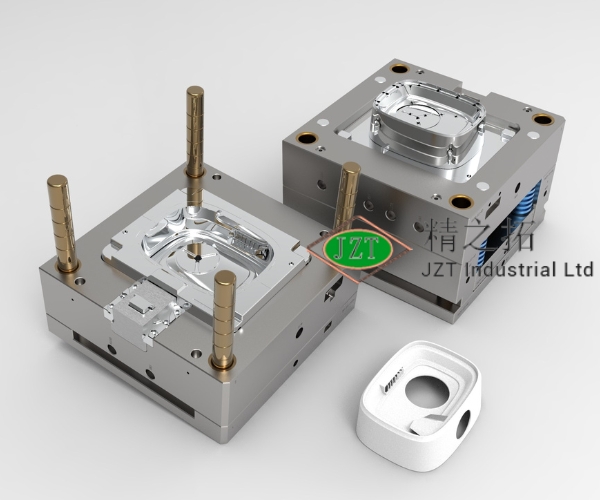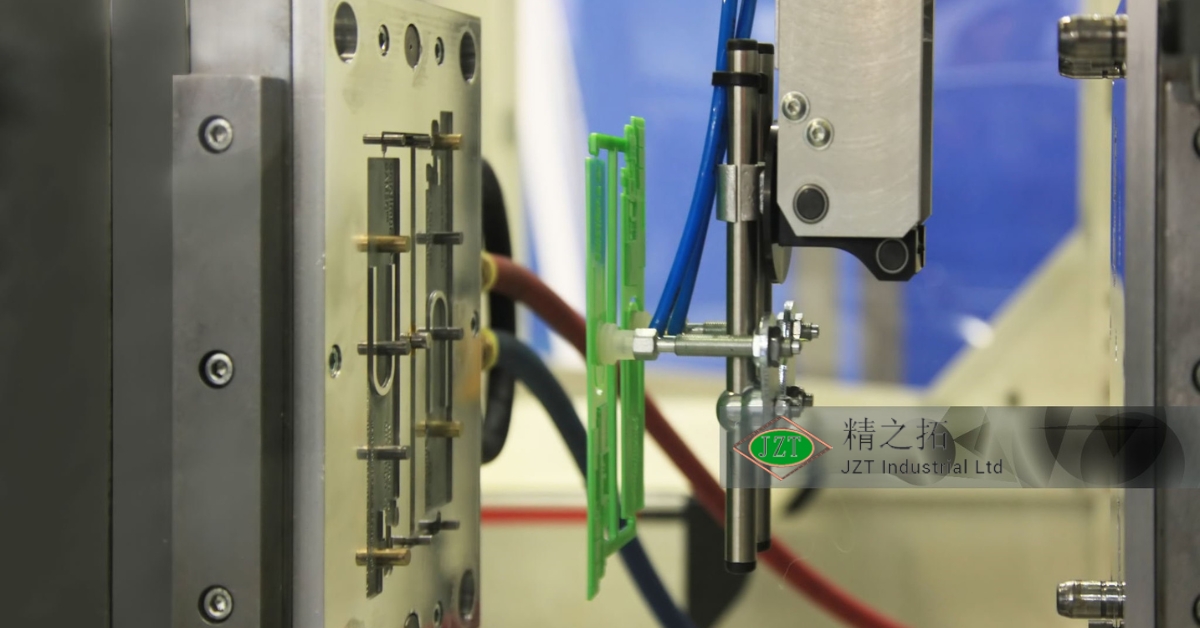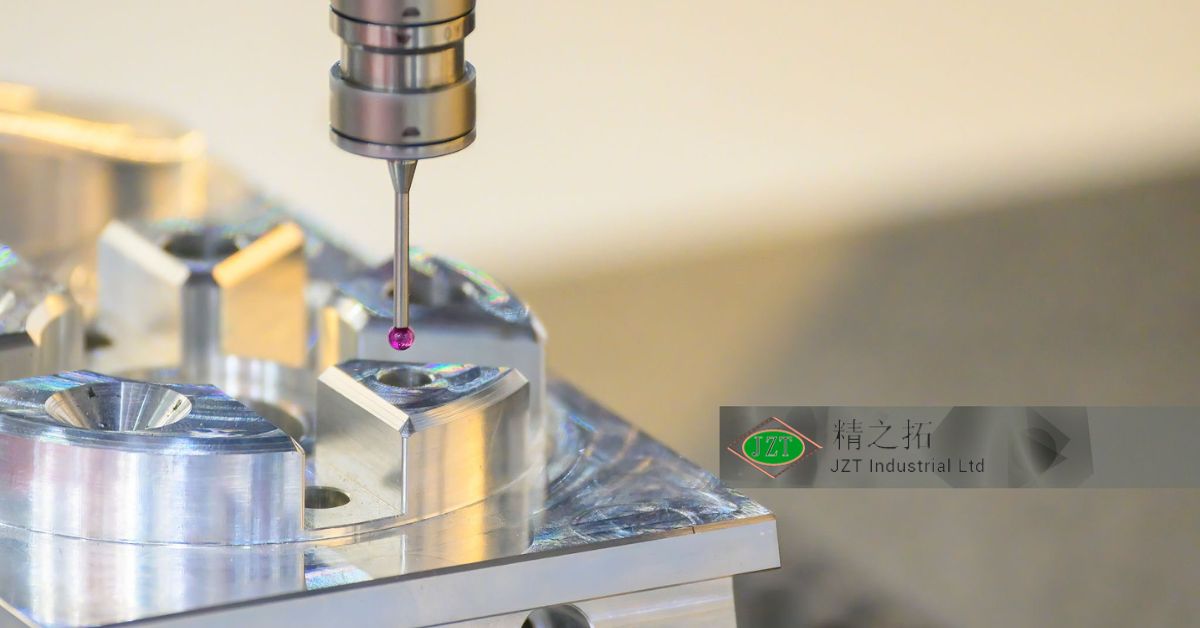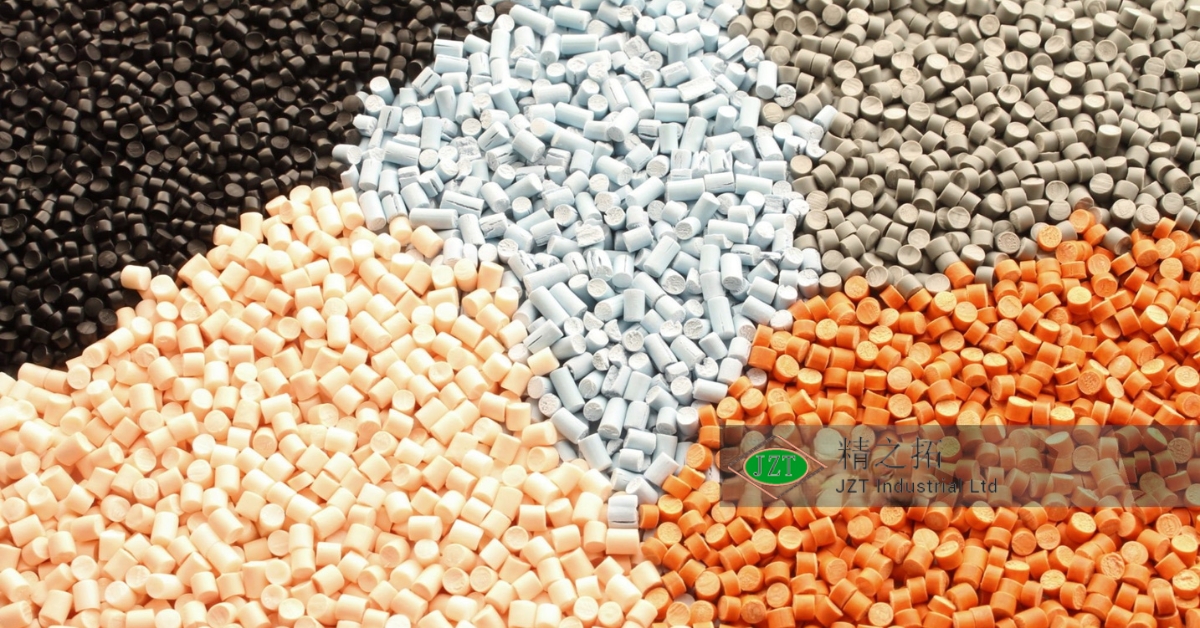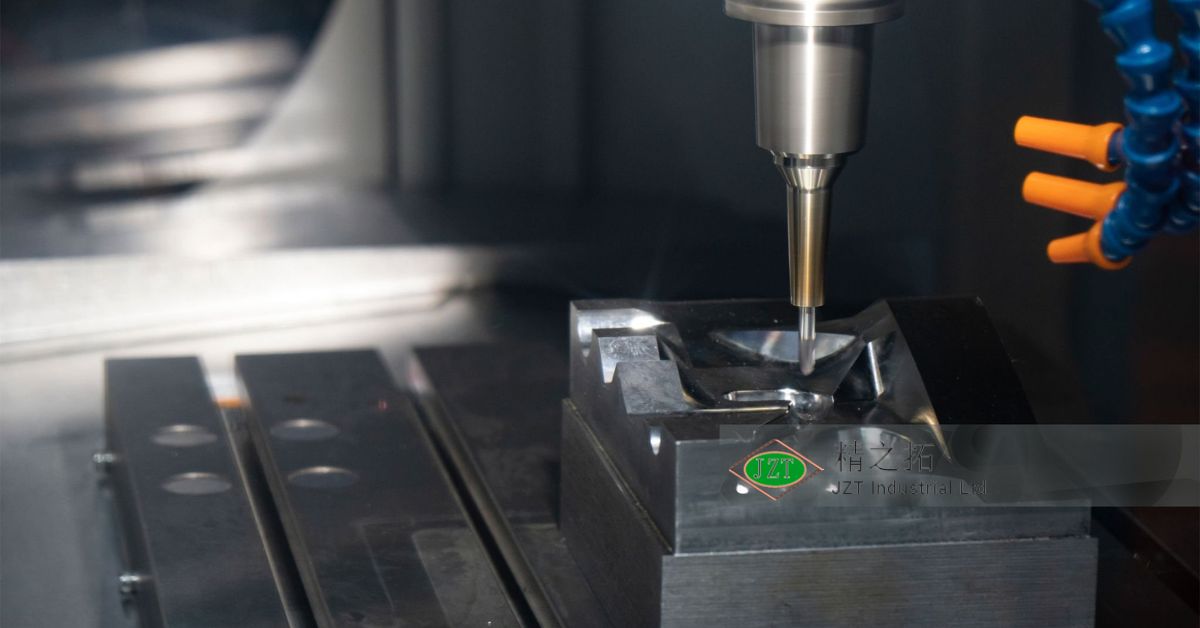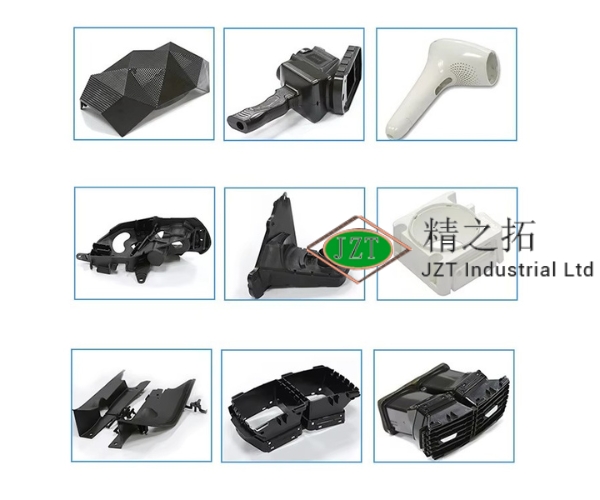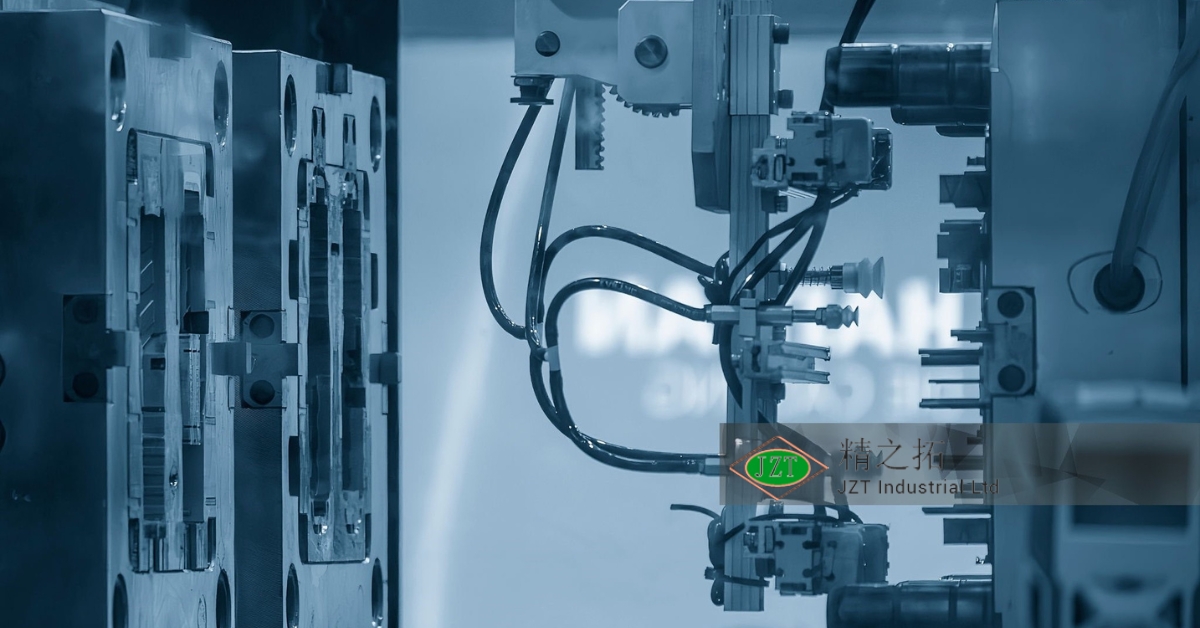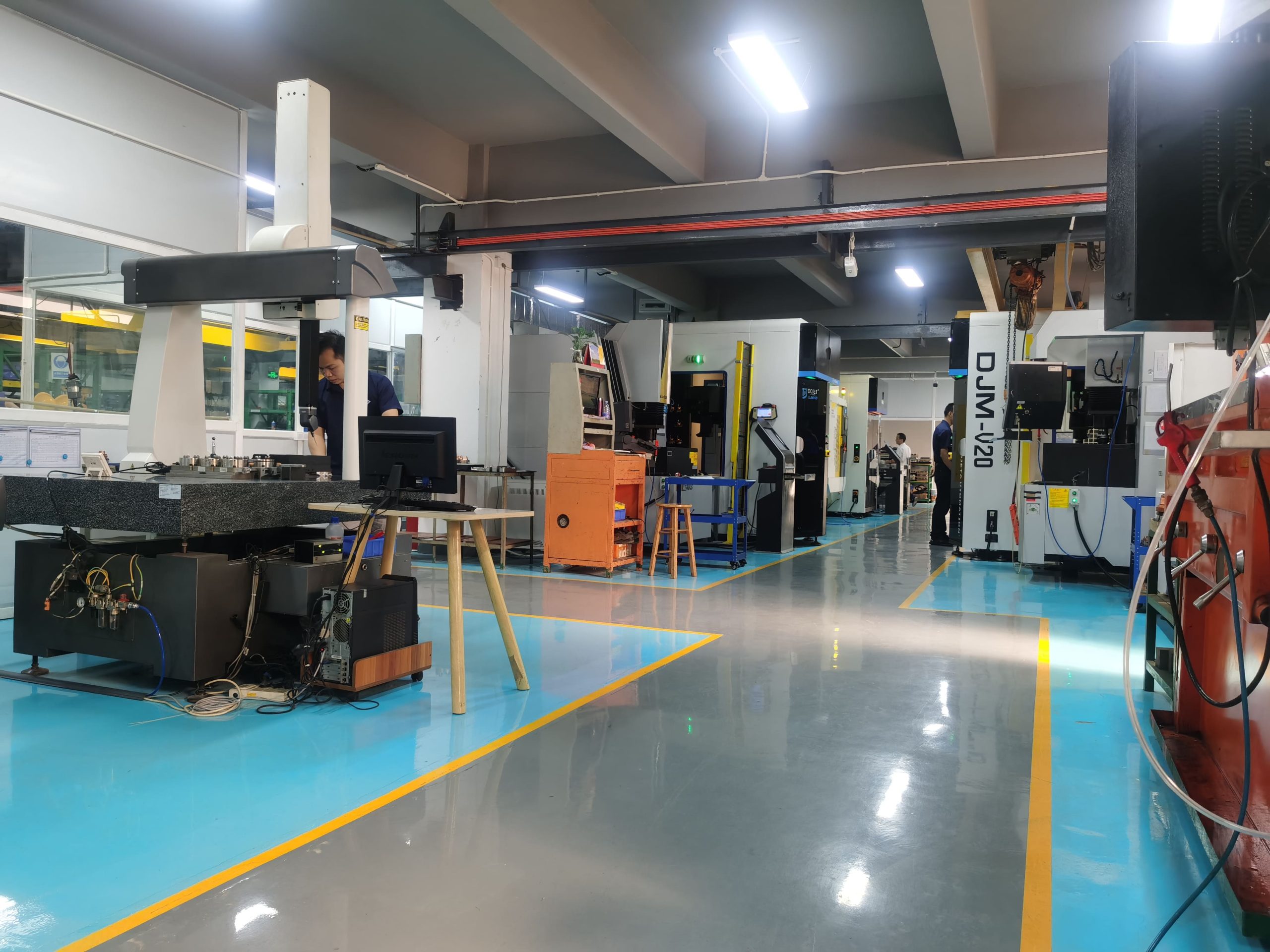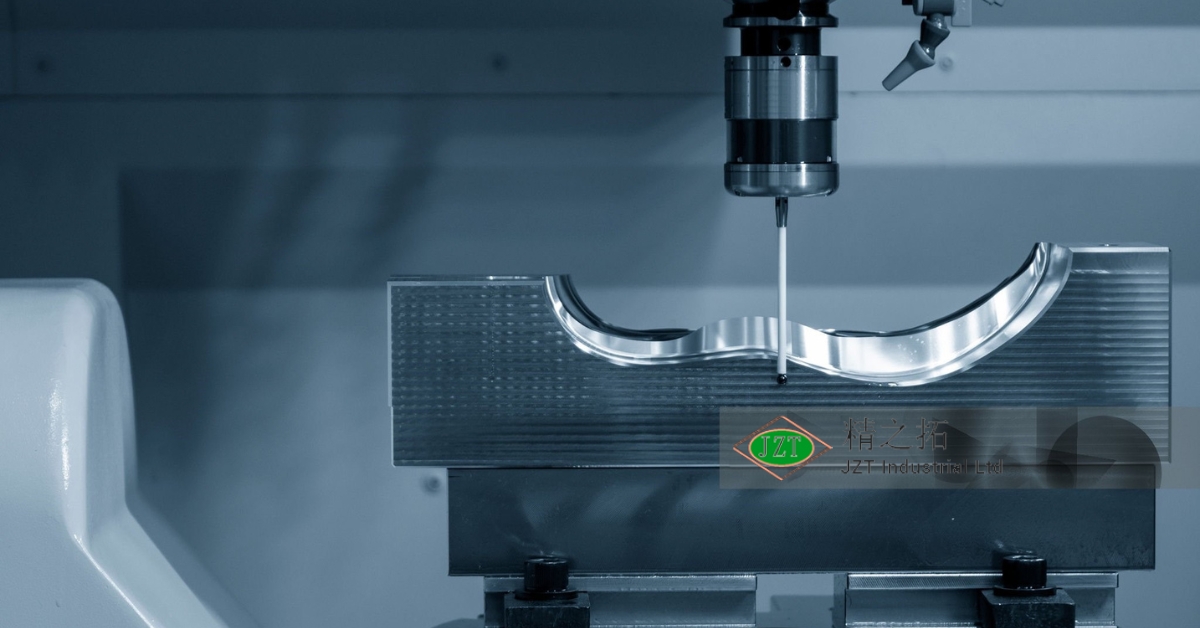Invoering
In today’s manufacturing world, high-performance plastic parts production is essential for industries that demand durable, precise, and reliable components. Whether for the automotive sector, medical devices, or consumer electronics, high-performance plastics have become critical due to their ability to withstand extreme conditions and deliver long-term functionality. For companies looking to produce op maat gemaakte kunststof onderdelen with high precision and scalability, kunststof spuitgietmatrijzen have emerged as the most efficient solution.
Maar waarom is spuitgieten the go-to method for high-performance plastic parts? The answer lies in its unparalleled ability to create complex, durable parts consistently and cost-effectively. With the versatility of injection molding, manufacturers can meet the specific requirements of various industries while producing large volumes of parts with minimal defects and variations.
This comprehensive guide will explore the many reasons spuitgieten is the preferred choice for high-performance plastic parts. We’ll delve into the process itself, its benefits, the materials used, and how it solves the challenges of producing complex plastic components. If you’re a fabrikant van kunststofonderdelen or simply curious about how the process works, this guide will provide you with all the insights you need.
Understanding High-Performance Plastic Parts
What Defines High-Performance Plastic Parts?
High-performance plastic parts are defined by their ability to withstand demanding environments and harsh conditions without compromising on performance. These parts are used in industries where components are exposed to high temperatures, chemical interactions, mechanical stress, or require electrical insulation. They must be designed to deliver long-lasting durability while maintaining precision in their functionality.
Key characteristics of high-performance plastic parts include:
- Heat resistance: Ability to function in high-temperature environments.
- Chemical resistance: Resistance to corrosion and chemical degradation.
- Mechanical strength: High tensile strength and resistance to wear and impact.
- Precisie: Tight tolerances and dimensional stability.
- Electrical insulation: Non-conductive properties for electronics and electrical applications.
These parts are often chosen over traditional materials like metals due to their lightweight nature, corrosion resistance, and ease of production in large volumes.
Common Applications of High-Performance Plastic Parts
High-performance plastic parts are essential in various industries, including:
- Automobiel: Engine components, fuel system parts, and lightweight structural elements.
- Lucht- en ruimtevaart: High-heat and high-stress parts, like those used in engines and fuel systems.
- Medische hulpmiddelen: Biocompatible plastic components for surgical instruments, implants, and diagnostic tools.
- Consumentenelektronica: Casings, connectors, and protective housings for devices such as smartphones and laptops.
- Industrial Machinery: Gears, seals, and bearings that require high durability and wear resistance.
In these applications, the failure of a component can have serious consequences, making the choice of material and manufacturing process critical.
Material Selection for High-Performance Parts
Choosing the right material for high-performance plastic parts is a crucial step in ensuring the parts can meet the required demands. Aangepaste kunststof onderdelen used in high-performance applications must be manufactured from materials that offer superior strength, resistance, and longevity. Some of the most commonly used high-performance plastics include:
- PEEK (Polyether Ether Keton): Known for its high temperature and chemical resistance, making it ideal for aerospace and medical applications.
- Nylon (Polyamide): Offers excellent mechanical strength and wear resistance, frequently used in automotive parts.
- Polycarbonate: Known for impact resistance and transparency, used in electronics and medical devices.
- ABS (Acrylonitril Butadieen Styreen): A versatile plastic that offers good strength and impact resistance, commonly used in consumer electronics.
Each material must be carefully chosen based on the part’s end-use requirements, considering factors like exposure to heat, chemicals, or mechanical stress.
Wat is spuitgieten?
Basic Overview of Injection Molding
Injection molding is a widely used manufacturing process for producing plastic parts in large volumes. It involves injecting molten plastic material into a precision-made mold, where the plastic cools and solidifies into the shape of the mold cavity. This process allows for the creation of identical parts with complex shapes and tight tolerances.
The process consists of several key steps:
- Klemmen: The two halves of the mold are securely clamped together.
- Injectie: Molten plastic is injected into the mold cavity under high pressure.
- Koeling: The plastic cools and solidifies inside the mold.
- Uitwerpen: Once the part is cooled, the mold opens, and the part is ejected.
Because of its ability to produce consistent, high-quality parts at scale, spuitgieten is the preferred manufacturing method for op maat gemaakte kunststof onderdelen in industries ranging from automotive to consumer electronics.
Why Injection Molding is Ideal for Plastic Parts Production
There are several reasons why kunststof spuitgietmatrijzen are ideal for high-performance plastic parts production:
- Precision and accuracy: Injection molding offers tight tolerances, making it possible to produce highly precise parts with minimal variation, even in complex geometries.
- Schaalbaarheid: Once a mold is created, thousands or even millions of parts can be produced quickly and cost-effectively.
- Materiaal veelzijdigheid: Injection molding supports a wide range of plastic materials, including high-performance thermoplastics, allowing manufacturers to tailor parts for specific applications.
- Low waste: The injection molding process minimizes material waste, as excess plastic can often be recycled and reused in production.
Injection Molding for Complex Designs
One of the major advantages of spuitgieten is its ability to create complex part designs that are difficult or impossible to achieve using other manufacturing methods. Intricate features like undercuts, thin walls, and precise internal channels can all be achieved with the right mold design. This level of design flexibility is particularly valuable in industries that require parts with multiple functions, such as medical devices and automotive components.
Because of the high level of control over the molding process, spuitgieten can create parts with consistent dimensions and high repeatability, which is essential in the production of hoogwaardige kunststof onderdelen.
Why Injection Molding is the Go-To Solution for High-Performance Plastic Parts
Precision and Accuracy
Voor hoogwaardige kunststof onderdelen, precision is non-negotiable. Kunststof spuitgietmatrijzen are capable of producing parts with incredibly tight tolerances, ensuring that each part meets exact specifications. This level of precision is crucial in industries like aerospace and medical devices, where even the smallest deviation can lead to part failure or malfunction.
Injection molding allows for precise control over the entire process, from material selection to mold design and cooling times, ensuring that each part is produced with the same accuracy. The ability to maintain dimensional stability over large production runs makes injection molding the ideal solution for manufacturers needing parts that perform reliably in demanding environments.
Consistency in Mass Production
When it comes to large-scale production, consistency is key. Injection molding is unparalleled in its ability to produce thousands or even millions of identical parts with minimal variation. This is particularly important in industries like automotive or consumer electronics, where every part must fit perfectly within an assembly.
Because the mold remains the same throughout the production process, manufacturers can rely on spuitgieten to deliver consistent quality from the first part to the last. This makes it the go-to solution for fabrikanten van kunststofonderdelen looking to produce op maat gemaakte kunststof onderdelen at scale without sacrificing quality.
Cost-Effectiveness at Scale
While the initial cost of creating an injection mold can be high, the process becomes incredibly cost-effective for large production runs. Once the mold is created, the per-part cost decreases significantly as production volumes increase. This makes injection molding particularly advantageous for high-volume applications, where other manufacturing methods like CNC machining or 3D printing would be prohibitively expensive.
Voor fabrikanten van kunststofonderdelen, the scalability of injection molding allows them to meet the demands of large contracts while keeping costs low. This cost efficiency is one of the reasons spuitgieten is the preferred choice for high-performance plastic parts production.
Materiaal veelzijdigheid
Another reason why spuitgieten is favored for hoogwaardige kunststof onderdelen is its material versatility. The process supports a wide range of thermoplastics, from standard materials like ABS and polypropylene to high-performance plastics like PEEK and nylon. This allows manufacturers to tailor their material selection based on the specific requirements of the application, whether it’s heat resistance, chemical stability, or mechanical strength.
With injection molding, manufacturers can also create multi-material parts through techniques like overmolding, which involves molding two or more materials into a single part. This is especially useful in industries like electronics, where different parts of a component may need different material properties, such as a soft exterior for ergonomics and a rigid interior for structure.
Speed and Efficiency
One of the key advantages of spuitgieten is its speed. Once the mold is created, the production cycle is relatively fast, often taking only seconds to produce each part. This allows manufacturers to quickly scale up production, meeting high demand without compromising on quality or consistency.
In industries where time-to-market is critical, such as consumer electronics, spuitgieten offers a fast and efficient way to produce hoogwaardige kunststof onderdelen in large volumes. This speed, combined with its precision and cost-effectiveness, is why injection molding remains the go-to solution for high-performance applications.
Injection Molding for Complex and High-Precision Parts
Handling Complex Geometries
One of the most compelling reasons spuitgieten is the go-to solution for high-performance plastic parts production is its ability to handle highly complex geometries. Advanced mold designs enable manufacturers to create parts with intricate details, undercuts, internal channels, and thin walls that would be difficult, if not impossible, to achieve using other manufacturing processes like CNC machining or 3D printing.
The ability to mold complex shapes allows for greater design freedom and innovation, which is critical for industries such as medical devices and electronics. For example, small plastic gears used in intricate machinery or components with built-in connectors for electronic devices can be molded with extreme precision. This makes injection molding the ideal method for producing parts that need to integrate multiple functionalities into one compact design.
Additionally, kunststof spuitgietmatrijzen can be designed to include features such as texture, logos, or even surface finishes, allowing manufacturers to customize parts to exact specifications without the need for secondary operations. This level of design complexity and precision makes injection molding indispensable for the production of op maat gemaakte kunststof onderdelen in high-performance applications.
Tight Tolerances and Dimensional Stability
In high-performance applications, maintaining tight tolerances and dimensional stability is crucial. Parts that do not meet exact specifications can cause failure in critical systems, whether it’s in an aircraft engine, a medical device, or an automotive transmission. Injection molding offers exceptional control over dimensional accuracy, ensuring that every part produced adheres to strict tolerances.
Nauwe toleranties are particularly important in applications where parts must fit together perfectly or interact with other components in an assembly. For example, in the aerospace industry, injection-molded components used in fuel systems or engine compartments must be produced with the highest level of accuracy to ensure safety and functionality under extreme conditions.
Because the mold remains consistent throughout the entire production run, spuitgieten guarantees uniformity in every part produced. This ensures that all parts meet the exact dimensional requirements, reducing the risk of defects and failures in the field.
Design Flexibility
The versatility of spuitgieten allows for considerable design flexibility. Manufacturers can create parts with complex internal structures, multi-material compositions, and even components with varying wall thicknesses—all in a single production cycle. This level of design flexibility is particularly valuable for industries such as automotive, where components must meet specific structural, aesthetic, and functional requirements.
One of the key advantages of injection molding is the ability to integrate features directly into the part, eliminating the need for secondary operations. For example, threaded inserts, clips, or snap fits can be molded directly into the part, reducing assembly time and improving overall part strength. This not only enhances the performance of the part but also lowers production costs by reducing the need for additional machining or finishing steps.
Materials Used in High-Performance Injection Molding
High-Performance Thermoplastics
The materials used in high-performance plastic parts production play a critical role in ensuring that the final product can withstand the rigors of its intended application. For demanding industries like aerospace, automotive, and medical devices, spuitgieten provides access to a wide range of high-performance thermoplastics that offer superior mechanical, thermal, and chemical properties.
Some of the most commonly used high-performance plastics include:
- PEEK (Polyether Ether Keton): Known for its excellent mechanical properties, chemical resistance, and high-temperature stability, PEEK is often used in aerospace, medical, and industrial applications. It is capable of withstanding temperatures up to 250°C and is highly resistant to wear and fatigue.
- Nylon (Polyamide): Offering high tensile strength, abrasion resistance, and durability, nylon is frequently used in automotive parts, gears, and mechanical components. Its excellent impact resistance and low friction make it ideal for parts that experience mechanical stress.
- Polycarbonate: This plastic is widely known for its impact resistance and optical clarity, making it an excellent choice for medical devices and electronics. Polycarbonate also exhibits good thermal stability, making it suitable for parts exposed to moderate heat.
- ABS (Acrylonitril Butadieen Styreen): ABS is a popular material for consumer electronics and automotive parts due to its toughness, rigidity, and ease of molding. Its versatility allows manufacturers to create parts with high precision and excellent surface finishes.
Choosing the Right Material for the Application
Selecting the right material for high-performance plastic parts is crucial to ensuring that the final product meets the required specifications. Factors such as operating temperature, chemical exposure, mechanical stress, and electrical insulation must all be considered when choosing the appropriate plastic.
Injection molding offers the advantage of working with a wide variety of materials, allowing manufacturers to tailor the material selection to the specific needs of the application. For instance, parts used in high-heat environments may require materials like PEEK, while parts exposed to constant friction may need the durability of nylon.
The material selection process is a critical step in the production of op maat gemaakte kunststof onderdelen because it directly impacts the performance, longevity, and reliability of the part in its intended environment.
The Role of Tooling in High-Performance Injection Molding
Importance of Precision Tooling
The quality of the tooling used in spuitgieten is critical to the success of the final part. Kunststof spuitgietmatrijzen are custom-made tools that define the shape, dimensions, and surface finish of the molded part. For hoogwaardige kunststof onderdelen, the mold must be designed with extreme precision to ensure that every part meets the required tolerances.
Precision tooling allows for the consistent production of parts with complex geometries, tight tolerances, and intricate details. Without a high-quality mold, the parts produced may suffer from defects such as warping, flashing, or uneven cooling, which can compromise their performance in critical applications.
In industries like aerospace and medical devices, where failure is not an option, precision tooling is essential to producing parts that perform reliably under stress.
Mold Design Considerations
The design of the mold has a direct impact on the performance of the final part. Mold designers must consider various factors, such as gate placement, cooling channels, draft angles, and parting lines, to ensure that the molten plastic flows evenly throughout the mold and that the part cools uniformly.
For high-performance parts, it’s important to optimize the mold design to reduce the risk of defects and improve production efficiency. For example, the placement of cooling channels can significantly affect the part’s dimensional stability and reduce the likelihood of warping. Additionally, designing the mold to allow for proper venting ensures that air does not become trapped in the part, leading to defects such as air bubbles or voids.
Material Considerations for Mold Tooling
The choice of material used for the mold itself is also important. Gereedschapsstaal is the most common material used for high-performance molds because of its durability and resistance to wear. However, for lower-volume production or prototyping, aluminium mallen may be used due to their lower cost and faster machining times.
The material selected for the mold must be able to withstand the pressure and heat of the injection molding process while maintaining dimensional accuracy over multiple production runs. For high-performance applications, where precision and longevity are key, tool steel is typically the preferred choice.
Challenges in High-Performance Plastic Parts Production and How Injection Molding Solves Them
Complex Part Designs
Producing complex part designs can be challenging, especially when the part must meet specific performance criteria such as high strength, chemical resistance, or thermal stability. Injection molding addresses these challenges by allowing manufacturers to create intricate part geometries with high precision. Multi-cavity molds, overmolding techniques, and the ability to integrate complex features like undercuts and threads make injection molding the go-to solution for producing complex parts.
For example, in the medical device industry, parts like catheter connectors or surgical instruments often have intricate designs that require both precision and biocompatibility. Injection molding offers the design flexibility and accuracy needed to produce these parts consistently and at scale.
Het handhaven van nauwe toleranties
High-performance applications demand parts with nauwe toleranties that can maintain dimensional accuracy even under extreme conditions. Injection molding excels in maintaining these tolerances by using high-precision molds and optimized process controls. The ability to produce thousands of identical parts with consistent dimensions is one of the key reasons injection molding is preferred in industries like aerospace and automotive, where part failure is not an option.
Maintaining tight tolerances ensures that parts fit together correctly in assemblies and function as intended, even in environments with high temperatures or mechanical stress.
Balancing Cost and Quality
One of the biggest challenges in high-performance plastic parts production is balancing cost and quality. While producing high-quality parts is essential, cost considerations often drive decisions in manufacturing. Injection molding offers the perfect balance between quality and cost-efficiency, especially for large production volumes.
While the initial cost of creating a custom injection mold can be high, the per-part cost decreases significantly as production scales up. This makes injection molding an attractive option for manufacturers looking to produce high-performance parts at a reasonable cost without sacrificing quality.
Material Selection Challenges
Choosing the right material for high-performance parts can be challenging, especially when parts must meet multiple performance criteria such as heat resistance, impact strength, and chemical compatibility. Injection molding offers the flexibility to work with a wide range of thermoplastics, allowing manufacturers to select the best material for the application.
By carefully matching the material properties to the part’s requirements, manufacturers can produce parts that meet the specific demands of their end-use environments, whether that’s high temperatures in aerospace engines or constant wear in automotive applications.
Technological Advances in Injection Molding for High-Performance Parts
Automation and Robotics in Injection Molding
Advancements in automatisering En robotics have revolutionized the injection molding process, allowing manufacturers to produce parts with even greater precision and efficiency. Automated systems handle tasks such as material feeding, part removal, and quality inspection, reducing the likelihood of human error and speeding up the production cycle.
Robotic arms are often used to remove parts from the mold and transport them for secondary operations like assembly or packaging. This not only speeds up production but also ensures that parts are handled consistently, reducing the risk of defects.
Multi-Shot and Overmolding Techniques
Multi-shot molding En overgieten are advanced techniques that allow manufacturers to combine different materials or colors in a single part. This is particularly useful in high-performance applications where different parts of a component need different properties, such as a rigid core with a soft exterior for added grip.
For example, overmolding is commonly used in electronics, where connectors or housings may require a combination of rigid and flexible materials. These techniques allow manufacturers to create more complex parts without the need for additional assembly steps, improving efficiency and reducing costs.
Analyse en simulatie van malstroom
Analyse van de schimmelstroom and simulation tools have significantly improved the efficiency and accuracy of the spuitgieten process. By simulating how molten plastic will flow through the mold, manufacturers can optimize the design to reduce defects such as air traps, weld lines, or warping.
This technology allows manufacturers to identify potential issues before production begins, reducing the need for costly mold revisions and improving overall part quality. For high-performance applications, where precision and reliability are paramount, mold flow analysis is an invaluable tool for ensuring success.
Sustainable Injection Molding Practices
As industries move toward more sustainable manufacturing practices, spuitgieten is evolving to meet these demands. Many manufacturers are adopting energy-efficient machines, reducing material waste, and incorporating recycled or biodegradable plastics into their production processes.
Sustainable injection molding not only helps reduce environmental impact but also offers cost savings through reduced material usage and energy consumption. As more industries prioritize sustainability, injection molding will continue to play a key role in producing eco-friendly op maat gemaakte kunststof onderdelen without compromising on performance.
Case Studies: High-Performance Injection Molding in Action
Automobielindustrie
In the automotive industry, spuitgieten is used to produce a wide range of high-performance plastic parts, including engine components, fuel system parts, and lightweight structural elements. The ability to produce durable, heat-resistant, and lightweight parts makes injection molding an ideal solution for improving fuel efficiency and reducing emissions in modern vehicles.
Lucht- en ruimtevaartindustrie
Aerospace applications demand parts that can withstand extreme temperatures and mechanical stress. Injection molding allows manufacturers to produce parts like brackets, bushings, and structural components from high-performance materials like PEEK and polyamide. These materials offer the strength and durability required for aerospace applications while reducing the overall weight of the aircraft.
Medische hulpmiddelen
In the medical device industry, spuitgieten ensures the production of sterile, biocompatible, and highly precise parts. Components like surgical instruments, diagnostic tools, and implantable devices must meet stringent regulatory standards, and injection molding provides the precision and reliability needed to meet these requirements.
Consumentenelektronica
Injection molding plays a crucial role in the production of durable, lightweight plastic parts for consumer electronics. From smartphone housings to internal connectors, injection molding allows manufacturers to produce parts that offer both aesthetic appeal and functional performance, ensuring that electronic devices are both stylish and durable.
Choosing the Right Injection Molding Partner for High-Performance Plastic Parts
Experience and Expertise in High-Performance Applications
De juiste keuze maken fabrikant van kunststofonderdelen is critical to the success of any high-performance injection molding project. Manufacturers with experience in producing parts for demanding industries like aerospace, automotive, and medical devices will have the expertise and technology needed to meet your specifications.
An experienced partner can offer valuable insights into material selection, mold design, and process optimization, ensuring that your parts meet the highest standards of quality and performance.
Technology and Equipment Capabilities
Bij het selecteren van een spuitgieten partner, it’s important to consider their technological capabilities. Advanced machinery, robotics, and process automation are essential for producing high-performance parts with precision and efficiency. Manufacturers with state-of-the-art equipment will be better equipped to handle complex projects and deliver consistent results.
Quality Control and Certifications
Quality control is paramount in high-performance plastic parts production. Manufacturers with certifications like ISO 9001 of ISO 13485 demonstrate a commitment to maintaining rigorous quality standards throughout the production process. These certifications ensure that your parts will meet the strictest regulatory and performance requirements.
Capacity for Large-Volume and Complex Parts
Finally, it’s important to choose a manufacturer that can scale production to meet your needs. Whether you’re producing a small run of highly complex parts or need large-volume production, your spuitgieten partner should have the capacity to handle your project efficiently.
Conclusie
In conclusion, spuitgieten is the go-to solution for high-performance plastic parts production due to its precision, scalability, material versatility, and cost-effectiveness. From the automotive and aerospace industries to medical devices and consumer electronics, injection molding offers the design flexibility and consistency needed to produce op maat gemaakte kunststof onderdelen that perform reliably in the most demanding environments.
With technological advancements in automation, robotics, and mold flow simulation, spuitgieten continues to evolve, providing manufacturers with faster production cycles, reduced costs, and improved quality. For businesses looking to optimize their plastic parts manufacturing process, partnering with an experienced injection molding expert is the key to success.
Veelgestelde vragen
1. What are the benefits of injection molding for high-performance plastic parts?
Injection molding offers precision, scalability, and material versatility, making it ideal for producing high-performance parts that meet strict industry requirements.
2. Which industries benefit most from high-performance plastic injection molding?
Industries such as automotive, aerospace, medical devices, and consumer electronics benefit from high-performance injection molding due to the need for durable, precise, and reliable parts.
3. What materials are commonly used in high-performance injection molding?
Common materials include PEEK, nylon, polycarbonate, and ABS, each chosen for their specific properties like heat resistance, mechanical strength, and chemical durability.
4. How does injection molding handle complex part designs?
Injection molding is capable of producing complex geometries, intricate details, and multi-material components, making it ideal for parts that require high precision and functionality.
5. What factors should I consider when choosing an injection molding partner for high-performance parts?
Look for experience in high-performance applications, advanced technology and equipment, quality control certifications, and the ability to scale production to meet your needs.

